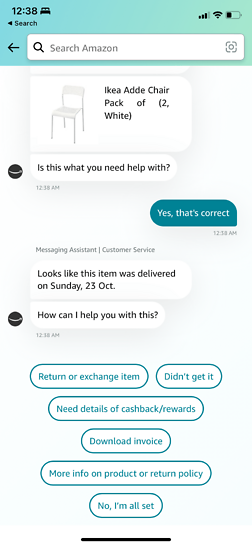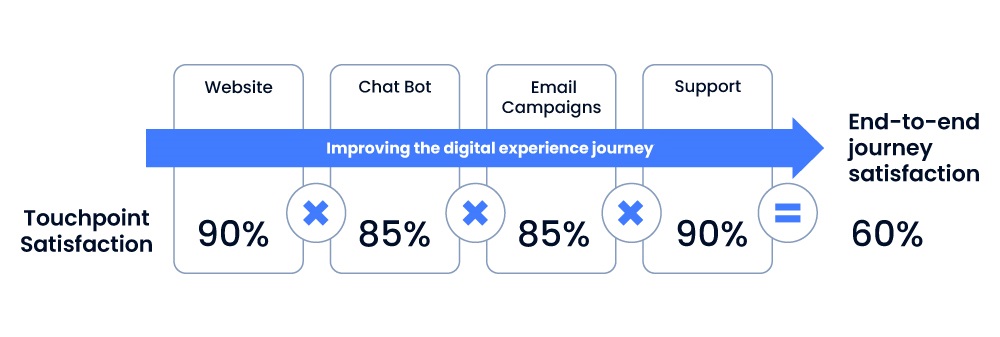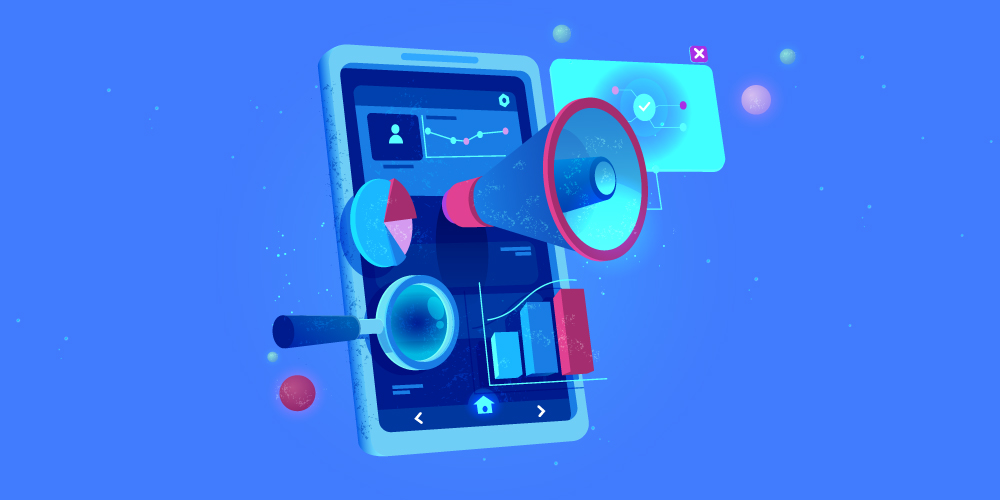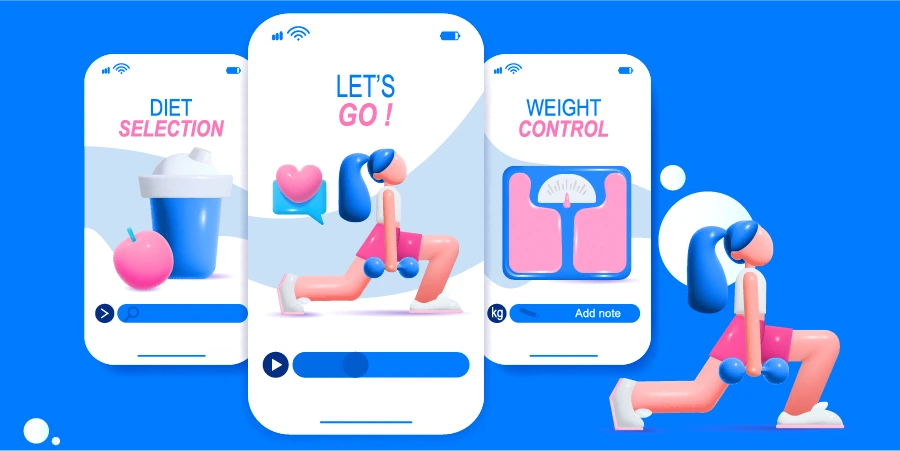Before we get into the nitty gritty of digital experience management, let’s consider a common scenario.
Imagine you walk into a supermarket to pick up groceries for dinner. You have a fair idea of the ingredients you need, but as you enter, a store assistant walks towards you to talk about all the offers they have on detergents, soaps, and just about everything that you don’t need.
Or worse, you’re left stranded in the produce aisle searching for tomatoes with no store assistant in sight.
You’ll walk out and head to a different store, for sure.
These are a few of the unfortunate ways in which stores drive away customers. And such poor experiences occur quite frequently over digital platforms too.
One in three customers says it takes just one poor experience to take their business elsewhere. Today, over around 27.6% of the world’s population (that’s 2.14 billion people!) buys online. Therefore, companies need to manage their digital experience strategy effectively to stay ahead of the curve.
What is Digital Experience (DX) Management?
Digital experience management is the process of improving and integrating your customer’s experience across all platforms. As the need for digital-first experiences increases, buyers prefer to explore products and services independently and reach out to the business to make the purchase later.
Your website, social media interactions, chatbots, email campaigns, and follow-up calls contribute to improving digital customer experience.
Utilizing the right tools and strategy for digital experience management can benefit your business in many ways.
Benefits of Digital Experience Management
1. Build a seamless customer journey
Customers prefer to ‘shop’ instead of ‘buy’, and businesses with an interactive digital presence help them do that. Managing digital experiences ensures no gaps in the customer journey, from when they land on your website to completing the purchase.
2. Sets your brand apart
Customer experience is the main competitive advantage that sets a brand apart from the rest. 86% of buyers are willing to pay more for a great customer experience. For example, an interactive website, frequent yet relevant communication, and quick support over chat—all aid in building a positive brand reputation.
3. Personalization at scale
Any customer experience, digital or in-person, needs to be personalized. 54% of people expect a personalized discount from a business within the first 24 hours of interacting with them. Every point of contact, a click on the website, a form filled, or an email opened generates data that personalizes opportunities to sell, upsell, and cross-sell.
4. Boosts your bottom line
This benefit is an outcome of personalization and a seamless customer journey that you can easily expect. Optimal digital experience ensures a longer customer lifetime value and can significantly decrease acquisition costs.
5. Decreases additional personnel expenses
Even though setting up automation can be costly, it eliminates tasks that would require an entire team if they were carried out manually. An automated digital experience also decreases human errors and is far more efficient.
As technology evolves, customer-oriented automation just keeps getting smarter with AI and machine learning at play. Amazon’s chatbot, which uses neural networks instead of flowcharts, has transformed customer experiences for returns and refunds. Most issues are resolved in under a few minutes without speaking to a customer support representative.

When a query is raised, the chatbot first predicts the issue, and then it presents the users with a few choices to resolve the problem. Amazon has taken personalization to the next level by providing support in regional languages such as Hindi in India.
But businesses don’t have to worry about investing in AI tools at this very moment! Because setting up marketing workflows on multiple channels for automated communications isn’t hard, but managing parallel interactions across every platform can be challenging. So, where do you start?
Identify the Gaps in your Customer’s Digital Experience
You can’t improve something that you haven’t experienced. So, before switching to a tool or service, audit your digital customer experience first. You can also consider partnering up with a consultant, market research expert, or mystery shopper to identify touchpoints that can be improved.
Here’s how you can identify the gaps in digital customer experience:
- Collect customer feedback for every positive and negative interaction to understand what your buyers are looking for, what they love, and what can be improved.
- Map the entire customer journey across every digital platform and visualize what it looks like. Focus on the details, for example, the average turnaround time at each touchpoint, the content and resources being shared, and the added layer of personalization.
- Audit every touchpoint and campaign to find if there’s any gap that might have been overlooked. You can browse your website or app as a user to check what every click or download leads to and which actions trigger automation.
- Identify the touchpoints with a high drop ratio or turnaround time. It might be the stage that makes your break your deal.
“Sometimes businesses need to bring about a revolutionary change in their digital customer journey. You shouldn’t be afraid to let go of a few channels that affect customer experience instead of focusing on improving them. It serves as an opportunity to adopt new, more effective channels. For example, decreasing your response time by eliminating cloud telephony and adopting messaging and chat platforms instead.”
Sreelesh Pillai, Advisor – ANZ Region, LeadSquared.
- Test how well your online and offline teams are integrated while catering to your customer. For a buyer, the digital experience and on-ground experience, such as picking up an order from the store or getting goods delivered, aren’t two separate segments of the buying process. And it’s your job to ensure they don’t feel that way.
Once you have identified the loopholes in your digital customer experience, you can move towards improving it across all channels. The most common channels for any business include:
- Website
- Mobile Applications
- Social Media
- Chatbots and Messengers
- Payment portals
All these channels have one thing in common; they need to be extremely customer-centric. While designing or revamping the digital experience journey for your customer, there are 5 key areas to focus on.
The 5 Pillars of Successful Digital Experience
#1 Channel Flexibility
Consistency is crucial in managing digital experiences. The outcome of every channel individually might be excellent, for example, high open and click rates on campaigns, but it may not always lead to deals being closed.

On average, individuals in Europe and America own around 9 devices connected to the internet. Any combination of these devices can be used to make a purchase! Channel flexibility ensures that the content shared with users is consistent across all digital platforms.
To ensure channel flexibility, you need to:
- Build a single source of truth of customer data that is updated in real-time.
- Ensure that this data flows and updates itself across all digital platforms.
- Create a custom experience for each user based on their preferences.
- Employees should be able to monitor the customer journey across every platform.
“A central data resource helps the systems talk to each other. This resource records every customer interaction in real-time, which can be accessed by the backend and frontend teams. It decreases the decision-making time and eliminates friction across various platforms.”
Sreelesh Pillai, Advisor – ANZ Region, LeadSquared
#2 Immediacy
Buyers don’t like to wait for a response, and 75% of buyers believe that fast response time is the most important attribute of customer service. Whether they need additional information or any support in the buying process, a business must be able to provide it even before they can ask for it.
According to research, customers expect the response time to be under 1 hour, and anything under 15 minutes is a sign of exceptional customer service. Customer service teams find it hard to meet this expectation without any automation.
But not every business wants automation to be their primary client-facing service! The good part is that automation doesn’t have to replace your reps’ calls. Instead, they can be used as a first response for updates and to set the right expectations.
For example, if someone has raised a support ticket or a lead wants to understand a product better through a live demonstration, they don’t have to be left hanging without a response. You can send them an automated email at that instant that informs them of the expected timeline. For example,
Hi,
Thank you for reaching out! My colleague will address your query under x hours within our working hours, between 9 AM and 5 PM from Monday to Friday.
In the meantime, you can refer to our FAQs and support portal to see if you find a solution to your challenge there: www.website.com/faqs-and-support
Regards,
Here are a few other ways that businesses use automated communication to speed up conversions at various touchpoints:
- Retail and e-commerce stores share cart abandonment emails to nudge towards completing the purchase.
- Higher education institutes, career schools, and colleges send out a notification (in-app or over email) to remind students to complete and submit their applications. By doing so, you also allow students to fill out the application forms at their convenience while decreasing drop-offs.
- Welcome and onboarding emails are a great way to engage customers after they subscribe to your product/service. It ensures a smooth adoption of the services and decreases churn.
#3 Personalization
Digital experience can be automated, but it can’t be impersonal. Personalizing automated experiences for your business requires an well thought out workflow and data that gets recorded at every touchpoint.
The data you need for extensive personalization can only be collected based on privacy laws and how willing your customers are to share their information. As we mentioned before, automated emails and other forms of communication are only possible when you’re aware of the exact lead stage for all customers.
“Social media platforms like Instagram always keep a track on user activity. If you don’t use your account for a few days, you will get notifications that nudge you to view a friend’s story or their most recent post. After a few days, you might even get an email related to account inactivity. This is the kind of omnichannel, connected experience that the right kind of data and integrations help you build.”
Anannya Kodandera, Digital Experience Manager
For highly personalized customer journeys, a business can adopt a Customer Relationship Management (CRM) system for real-time, customer-centric data. Additional information, such as purchase history and buying patterns, can ensure that you’re targeting the right digital experience channels. A reliable CRM platform also securely stores user data on a single platform.
#4 Convenience
If a buyer makes a purchase online, they’re doing so to avoid the traffic, lines in the store, and the hassle of stepping out. The differentiating factor is always convenience.
The ultimate aim of digital service transformation is to enable self-service solutions for their customers. Queries can be resolved within minutes once you’ve cracked the proper workflows. Most businesses focus on ensuring that the customer doesn’t feel processed. Instead, it needs to feel like a conversation.
Here’s how Annanya’s team ensures a convenient and simple in-app experience while onboarding new customers. Their product, UI and UX, and marketing teams work together to deliver convenience in their digital experience.
“Based on the product team’s requirements, the UI and UX team works on setting up the app to engage the customer. While the user is on the app, a guided tour helps them. The user data tells us which stage they’re at, and that’s where the guided tour and email campaigns begin from. For support, there’s an in-app chat and a technical help website which route right back to the app.”
Anannya Kodandera, Digital Experience Manager
The process is designed to support customers at scale. It’s an effective way to manage digital experiences while engaging the users. Plus, customers are less likely to look for a change when they have no reason to!
#5 Trackability
Perhaps the most essential aspect of digital experience management is the ability to track how each channel and campaign is performing.
Data platforms are advanced enough to predict the first and last click attributions and customer data. Yet, businesses need a single platform that gives them a holistic view of their:
- Marketing performance by campaign
- Marketing performance by source/channel
- Sales output
Generating these reports over various software by inputting the data can be pretty complicated. But a digital experience management software, like the LeadSquared CRM, becomes an end-to-end tool to automate marketing campaigns, track lead stages, build source and campaign reports, and analyze digital experience spends based on performance and ROI. If you’re looking to implement a CRM tool, let me make your task a bit easier with our handy guide.
Building and managing a digital experience journey isn’t a one-time process. It needs a lot of trials to perfect over time. Software can do most of the tasks and generate reports, but human instinct proves to be the best tool to understand and optimize digital experience.
“With the right reports, leadership gets to know the various touchpoints and campaigns running. Digital experience teams can organize regular meetings to discuss various touchpoints and establish the most effective channels to target.”
Sreelesh Pillai, Advisor – ANZ Region, LeadSquared
I hope these tips gave you a fair idea of creating a digital experience journey and managing it effectively. By now, we know that to scale any customer experience you need a tool that automates tasks for your business. Here’s how you can choose one:
Digital Experience Management Platform
A digital experience platform is technically a set of tools or a platform that includes tools such as CMS (e.g., HubSpot CMS), CRM, analytics and reporting software, and a payment portal.
But since every digital customer journey looks different across various industries, the features you need may be vastly different. The most important features are data collection, data security, and scalability.
A few questions that you should have in mind while choosing digital experience software are:
- What is the main objective of the business’s digital experience?
- Which digital platforms do you focus on? And can they be integrated with the digital experience platform?
- Does the platform allow you to customize your workflows with ease?
- How does your current martech stack integrate with the digital experience tool?
- Can it help you create an omnichannel digital experience journey?
- Is the tool compliant with the data privacy laws for your industry?
- Does it fit your budget and implementation timeline?
That brings us to the end of this article! Now that you have the questions you need to evaluate a digital experience platform, maybe you can take 15-minutes out to give LeadSquared a shot today.










